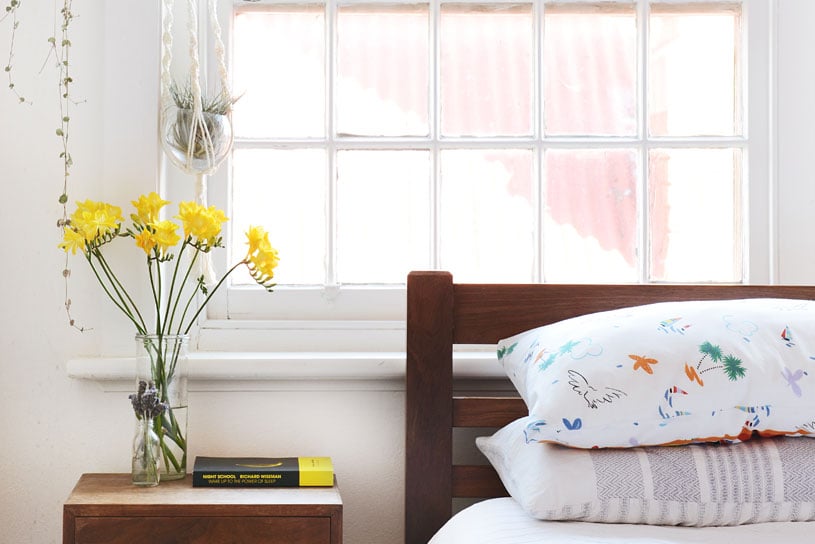According to a study done in 2017 by the British Geriatrics Society, more than half of the population aged 80 fell at least once a year.
As people age, small, or even ordinary maneuvers in their homes can often make them lose their balance. Addressing this issue is therefore especially important because older people are at a higher risk of sustaining serious injury.
Fortunately, there are ways to reduce their risk of falling at home. Keep reading to discover how.
Risk Factors for Seniors
More than any other age group, seniors are the ones that are more likely to fall down. In fact, one in three adults aged 65 or older falls each year, and falls are responsible for 87 percent of all fractures in people over the age of 65.
The older we get, the greater our risk is of falling. Some of this increased risk is due to age-related changes, which include:
- Muscle weakness: As we age, our muscles naturally weaken which leads to us losing muscle mass. This makes it harder to stay balanced, hence the higher likeliness of falling.
- Vision problems: As we age, our eyesight naturally deteriorates. This makes it harder for us to see the obstacles in our path (or judge distances accurately), therefore, increasing our risk of falling.
- Medications: Some medications that are used to, for example, treat high blood pressure, heart conditions and anxiety, can cause side effects such as dizziness or drowsiness, which in turn make us more likely to fall.
- Environmental hazards: Our homes may have obstacles that increase our risk of falling, such as throw rugs or loose cords. Likewise, we may encounter uneven sidewalks, slippery stairs or other hazards outside the home.
- Balance issues: Older adults often have balancing problems due to muscle weakness, inner ear damage or vision problems. These balance issues can cause one to fall more likely.
Seniors and their loved ones need to be more aware of these risk factors and take steps to reduce their risk of falling. Some simple ways to do this include exercising regularly, getting help to fix any hazards at home, and wearing shoes with good traction.
Tips to Reduce the Risk of Falls
There are a number of steps уоu саn tаkе to reduсe your risk of falling:
1. Start an exercise program to improve your strength and balance.
2. Make your home safer by removing tripping hazards, and install handrails.
3. Use a cane or walker if you need help with balancing.
4. Wear shoes that fit well and provide good support.
5. Be careful when you get up from a chair or bed. Use a stable stool or step ladder when reaching for something high.
6. Get up slowly after lying down or sitting for a long time.
7. Use caution when walking on slippery surfaces such as wet floors, carpets or rugs. Wear shoes with good traction to reduce your risk of slipping.
8. If you have a medical condition that makes you dizzy or lightheaded, tell your doctor.
9. Have your vision checked regularly, and wear glasses or contact lenses if needed.
10. Ask your doctor or pharmacist to review your medications to see if any of them can cause dizziness or drowsiness.
11. If you drink alcohol, do so in moderation. Alcohol can make you dizzy which in turn increases the chance of falling.
12. Make sure your home is well lit, both inside and out. Use night lights in hallways and bathrooms.
13. Be aware of changes in your energy level, vision and balance. These can be early warning signs of an underlying health problem that increases your risk of falling.
14. Talk to your doctor about your risk of falling, and ask what you can do to reduce that risk.
15. Use non-slip mats in the bathtub or shower, and keep your bathroom floors clean and dry to reduce the risk of slipping.
16. Keep an emergency medical alert system in your home in case you do fall and are unable to get up.
How to Keep a Safe Home Environment for Seniors
Many seniors live alone and are at an increased risk of accidents and injuries. A safe home environment can help reduce the likelihood of such unfortunate events occurring. Here are some tips from an orthopedic surgeon on how to create a safer home environment for seniors:
- Remove tripping hazards: Make sure rugs and carpets are firmly in place and that there are no loose wires or cords laying around that could cause one to trip and fall.
- Install grab bars: Grab bars in the shower and near the toilet can help seniors stay steady on their feet and avoid falls.
- Keep things within reach: Keep frequently used items within easy reach so that seniors don’t have to strain or reach awkwardly for them.
- Add lighting: Good lighting throughout the home can help seniors see better and avoid tripping over things that are hard to see in the dark.
- Make sure the home is well-maintained: Regularly check for things like loose handrails, broken steps and cracked sidewalks to ensure the home is in good condition.
Following these tips can help create a safe environment for seniors and reduce their risk of accidents and injuries.
First Aid for a Fallen Senior
An elderly adult falling can be a grave matter. This is because it can lead to broken bones, concussions, or even internal bleeding. Therefore, knowing how to respond in such a situation is of crucial importance.
According to First Aid for Life, you should first assess the senior’s condition. Look for any apparent injuries and check if they are conscious and alert. If possible, gently move them into a position where they can be comfortable and be monitored until help arrives.
If the senior is unconscious, the first thing you should do is call for emergency services. This will ensure that the senior is able to receive medical attention as soon as possible. If there are witnesses to the fall, ask as they can sometimes provide valuable information about what had happened and how the senior is currently feeling.
Before emergency services arrive though, check regularly to see if their airway is clear. If they are not breathing, conduct CPR immediately.
It is important to stay calm when following these steps. With quick thinking and proper action, you can save these seniors by helping them receive care in time and avoid further injury.
Will Hiring Caregivers Help Reduce Falling Risks for Adults?
There is no definite answer as to whether or not hiring caregivers will help reduce falling risks among adults. However, there are a few factors to consider when assessing the likelihood of falls occurring, thereby determining the need of having a caregiver (or not).
One such factor is the age of the adult. As discussed in the beginning of this article, older adults are more likely to experience falls due to declining physical abilities and increased risk of health problems. If you have elderly seniors at home, a caregiver will be of great help as s/he can monitor their health and well-being in addition to providing assistance in their daily living activities. Such support can highly reduce the risk of falls occurring.
Another factor to think about is the question of why an adult is at risk of falling. Take for example an adult with a health condition that can cause dizziness or unsteadiness – a caregiver would, in this case, be able to help them avoid situations or incidents that are prone to making them fall.
Additionally, if an adult is taking medication that causes drowsiness or dizziness, having a caregiver by their side can assist with making sure they stay hydrated and do not over-exert themselves.
With all that said, it is safe to say that hiring a caregiver can provide additional support and assistance (not to mention peace of mind) in reducing risk of falls for adults. Having said that, it is important to give consideration to each person’s circumstances accordingly when deciding on the matter of hiring a caregiver. After all, every person’s situation is different.
Balancing Exercises for Seniors
There are many different types of balancing exercises that seniors can do at home to help improve their balance and coordination. Some simple balancing exercises you can do at home include:
Standing on one leg: This exercise helps improve your balance by challenging your ability to stand on one leg without wobbling. To do this exercise, stand on one leg and hold the other leg out in front of you with your hand. Hold this position for 30 seconds and then switch legs.
Walking heel to toe: This is a great way to improve your balance and coordination while also getting some walking done at the same time. Walk forward heel to toe, ensuring your heel touches the ground before your toes. Walk for 10 steps and then turn around and walk back.
Sitting down and standing up: This exercise helps to improve your balance by challenging your ability to control your body while moving. To do this exercise, sit on a chair and stand back up without using your hands. Next, stand up tall – make sure you use your leg muscles to power yourself back up to a standing position. Repeat this 10 times.
These are just a few examples that seniors can do at home to help improve their balance and coordination. For more ideas, talk to your doctor or physical therapist. They will be able to create a customized balancing exercise program that is just right for you.
Summary
Although falls can be quite dangerous for the elderly, there are many ways to lower such risk and prevent falls from happening. Some simple precautions, like adding grab bars in the shower or using a raised toilet seat, can go a long way in making sure your home stay safe for the elders, for the people you love.



